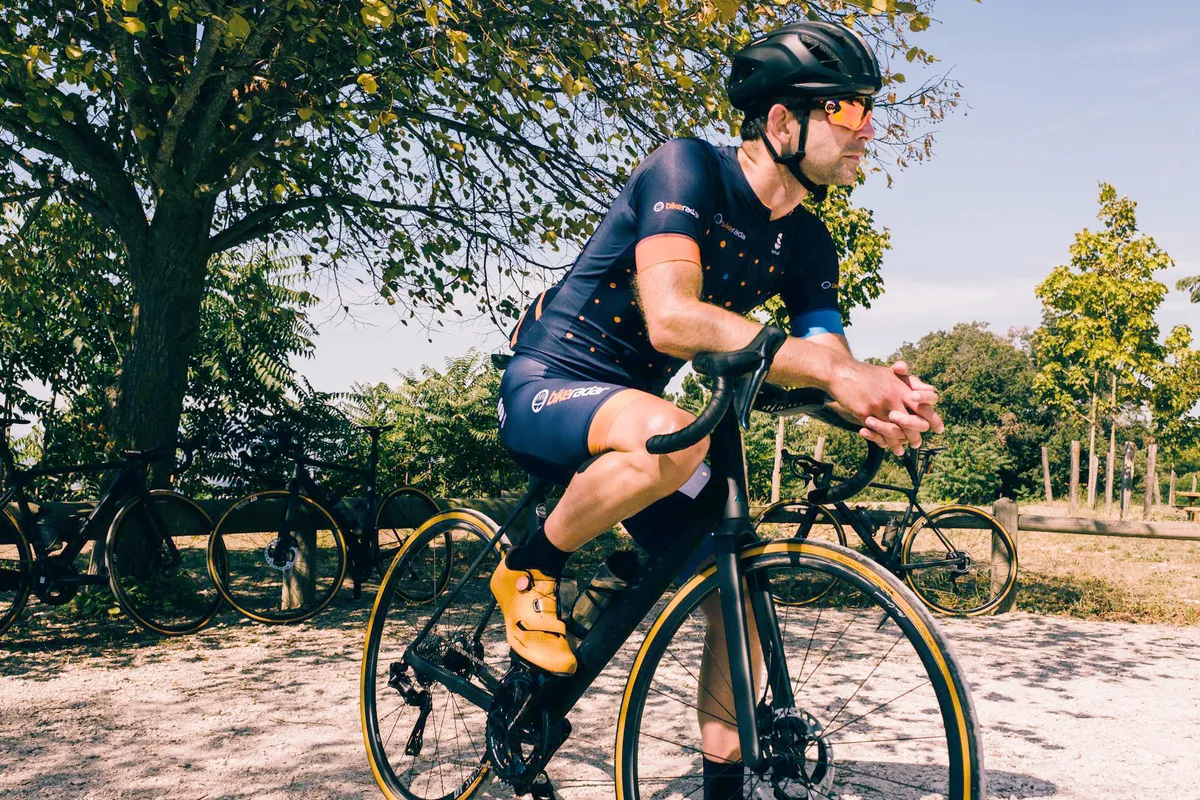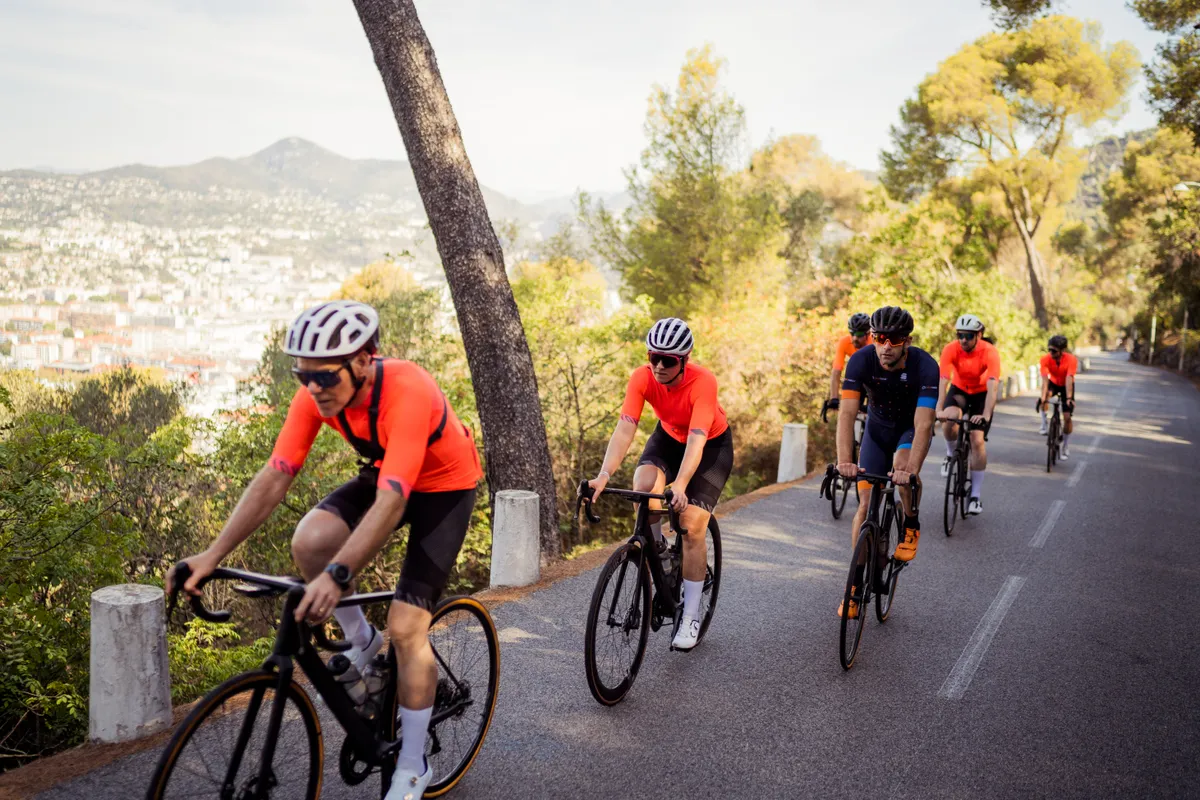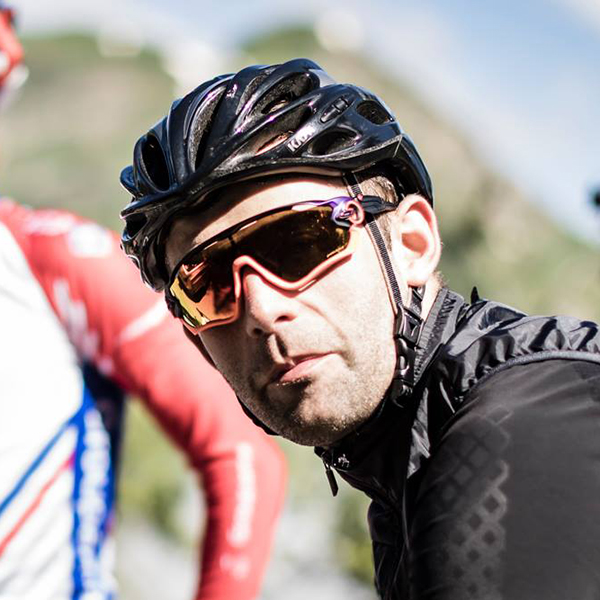German direct-to-consumer powerhouse Canyon has updated its Ultimate race bike, and there’s an air of ‘if it ain’t broke, don’t fix it’.
At a glance, the new Ultimate appears incredibly similar to the previous generation (and those that came before it). However, that shouldn’t lull you into thinking Canyon has been lazy with its efforts to improve its lightweight all-rounder.
The new Ultimate has seen a whole-body aero makeover, including a fully integrated and adjustable cockpit. Combined, this saves 5 watts with a rider on board at 45km/h.

The bike has also seen modifications to its carbon layup and small tweaks to each of the frame levels. Canyon has even managed to pack power meters into eight of the 10 complete builds – all while remaining (relatively) decent value.
I took the chance to head to Nice, in the south-eastern corner of France, to get a juicy first taste of a machine that could well re-cement the Ultimate’s reputation as a great-value top-performance road bike.
Served with the top-tier CFR frameset in a slightly off-spec build (more on that below), I found a bike that stays resolutely faithful to previous generations of the Ultimate. Although it isn’t a revolutionary leap forward, my early sense is the small improvements across the whole bike could add up to make a big difference.
Canyon Ultimate highlights
- 1,082g approx frameset weight (size medium, CFR spec)
- 5-watt claimed improvement in aero performance
- 15 per cent claimed improvement in head-tube stiffness
- CP0018 adjustable integrated cockpit ported over from the Aeroad
- 32mm tyre clearance
- New D-shape seatpost
- 8 sizes available (7 for the CFR frameset), with 650b wheel options
- 2 builds with mechanical groupsets
- Prices start from £2,699 / $2,999 / €2,699 / AU$4,800
Canyon Ultimate first impressions

When we spotted the new Ultimate earlier this year under Team Movistar riders, followed by its official unveiling in the south of France, there was more than a passing resemblance to its forebears.
Why? Canyon believes the fourth-generation Ultimate was already a leader in its field, but needed sprucing up with the latest refinements to stay ahead of its competitors.
A cynic might argue Canyon hasn’t really bothered to do anything innovative at all, but that would be unfair because the refinements are more than skin deep.
Look closer, and there’s a new integrated, adjustable cockpit, a fresh aero overhaul to the tubes thanks to Swiss Side, a new seatpost, improved tyre clearance, plus under-the-skin carbon layup tweaks.
In isolation, one or two of those refinements would rightly make anyone wonder what the fuss was about. But together, and with Canyon’s well-earned reputation for producing high-performing road bikes worthy of comparison with the best, they have the potential to help the fifth-generation Ultimate stand out from the all-rounder crowd again.
Targeting the ultimate balance

Where a road bike with a more aggressive aero leaning might come unstuck in the mountains, or a bike with a priority set only on light weight might sacrifice rigidity and stability, we’re reminded the Ultimate isn’t designed to lead the pack in any one quantifiable metric.
Certainly, its lack of a stronger aero evolution – Canyon claims going down that route would have compromised the ride quality it says the Ultimate is renowned for – sets the bike apart from catch-all rivals such as the Specialized S-Works Tarmac SL7.
As Matthias Eurich, Canyon’s road bike product manager, said to me at the launch of the new Ultimate: “Canyon’s never been in the business of innovating for the sake of it, or coming up with ‘trick solutions’.”
Instead, it seems Canyon feels the so-called “ultimate balance” isn’t achieved by pushing the upper boundaries of performance to an extreme, but by offering good performance across the board using time-honoured design methods.
As someone more familiar than many with the Ultimate genealogy (I own a third-generation rim brake Ultimate SL and have ridden a fourth-generation disc brake SLX), I’m initially encouraged by this approach.
Having said that, it does leave questions: if you already own an Ultimate, should you consider upgrading? And if you’re new to the Ultimate, does this latest version offer the performance and ride you’re looking for?
We’ll be getting this very bike in for a full review in the coming weeks and answering those questions. But for now, two rides spanning around 120km in the coastal mountains near Nice offer some enticing glimpses of what the Ultimate is all about.
You can read more about the new Canyon Ultimate in our launch story, and read on here to find out my first ride impressions.
Canyon Ultimate CFR first ride impressions

First, a specification check. My launch Canyon Ultimate came in the CFR Di2 spec, complete with Shimano Dura-Ace Di2 R9270 groupset.
My test bike featured two deviations from the listed spec customers will get. First is the use of the 20mm-setback seatpost you’ll get as default with the SLX and SL frames (stock CFR bikes will ship with an inline seatpost). Secondly, it was fitted with a standard Dura-Ace R9200 crankset (the Dura-Ace power meter crankset was missing due to current industry-wide supply issues, we’re told).
The first, shorter ride took me on a 35km loop up the Col d’Èze, famous for featuring regularly in the Paris-Nice week-long stage race. The second day was a longer tour down the coast to Menton, before taking on a regular pro rider training climb, the Col de la Madone.
The routes mixed significant climbs and descents – the drop down towards Nice from the Madone is one of my personal favourites – with some flat mileage.
Following both, my initial impression is Canyon has been successful in maintaining the overall ride feel of Ultimates past.

It’s plenty stiff to offer an efficient place to pedal up climbs, while it's one of the easiest bikes to handle heading back down ‘out of the box’ that I’ve ever come across.
The Ultimate uses Canyon’s Sport Pro geometry, and it now closely mirrors the Aeroad’s rider position, featuring the adjustable cockpit of the aero bike.
On my size large, 56cm bike, the reach measures at 401mm. That’s compared, for example, to the Trek Madone SLR’s 391mm. Add in a 10mm longer stem and that’s a whole 20mm difference for the same-size bike on paper.
Immediately, it relaxes the handling, but without dulling the steering inputs. Specific fit requirements aside, this is a bike I didn’t need to fold myself onto, but could easily slot into and still get the racy feel I like.
On my frame size, I benefited from 3mm longer chainstays than I’d have ridden before on an Ultimate. Although the difference is probably marginal, the 1,003mm wheelbase that also comes from the 73.25-degree head tube angle made descending super-stable too.

The roads and descents around the Côte d’Azur are notoriously well-paved, so I never had to deal with many unsettling surfaces. That’ll come when the Ultimate arrives with me in the UK.
The Ultimate might not benefit from a super-chunky bottom bracket area, or especially broad stays or head tube to augment its stiffness, but I never found it lacking in that department.
Though the Endurace is still Canyon's comfort-oriented endurance bike, I was left impressed by the compliance I could feel through my unpadded Selle Italia C59 carbon saddle. This is especially notable now the Ultimate’s geometry is a smidgen more aggressive than the outgoing generation.
Canyon admits it’ll be affected by the fitting of the more comfortable, laid-back D-shape seatpost on my CFR frame. But if your budget won’t stretch to the CFR, the SLX version is said to be the ‘best of both worlds’ when it comes to the balance of rigidity and compliance for most riders. Plus you’ll get that post as standard anyway.
I found the choice of Schwalbe Pro One TT 25c front and 28c rear tyres a curiosity. They’re light and perfectly matched for beautiful French roads and the top-spec DT Swiss PRC 1100 Mon Chasseral wheelset. However, experience tells me many may prefer wider (and perhaps sturdier) rubber if they want to really tune the Ultimate to less forgiving roads.
Luckily, the 32mm tyre clearance will allow for that.

Regarding aero performance, it’s nigh-on impossible to glean anything concrete from my first rides, and the CFR Di2 build with the Mon Chasseral wheels is certainly geared more towards climbing performance and stability than out-and-out speed.
A 5-watt saving at 45kph – and therefore inevitably less at more realistic speeds – isn’t headline-making in itself. However, if you’re happy to give away some on-paper efficiency to a more aero-optimised bike, I suspect most riders are more likely to appreciate the all-round ride experience the Ultimate’s design provides.
I missed a bit more aero slipperiness when knocking out close to 70km/h on the descents towards Nice. But deeper aero wheels would probably make a significant difference to how the Ultimate holds its speed – I’ll be testing that theory for my full review.
Canyon Ultimate CFR Di2 bottom line
Canyon set out in search of "the ultimate balance" with the latest Ultimate, and I’m left with the impression so far that it could have achieved its goal for a great many riders.
During my time with the bike in the south of France, I couldn’t fault the handling and behaviour. Although I think it will be giving a little away in terms of outright speed versus some (aero-optimised) race bike competitors, that’s not a stick we should beat it with unnecessarily.
A full review will follow in the coming month.
Product
| Brand | Canyon |
| Price | A$16899.00, €10499.00, £10399.00, $10999.00 |
| Weight | 6.30kg |
Features
| Fork | Canyon Ultimate CFR |
| Chain | Shimano Dura-Ace R9200 |
| Frame | Canyon Ultimate CFR |
| Tyres | Schwalbe Pro One TT, tubeless-ready (set up clincher), 25mm front / 28mm rear |
| Brakes | Shimano Dura-Ace R9270 |
| Cranks | Shimano Dura-Ace R9200 |
| Saddle | Selle Italia C59 Carbon |
| Wheels | DT Swiss PRC 1100 Mon Chasseral |
| Shifter | Shimano Dura-Ace R9250 Di2 |
| Cassette | Shimano Dura-Ace R9200 12×2, 11-30t |
| Seatpost | Canyon SP0055 (as tested) |
| Handlebar | Canyon CP0018 Aerocockpit |
| Bottom bracket | Pressfit 86 (PF86) |
| Available sizes | 2XS, XS, S, M, L, XL, 2XL |
| Rear derailleur | Shimano Dura-Ace R9250 Di2 |
| Front derailleur | Shimano Dura-Ace R9250 Di2 |
